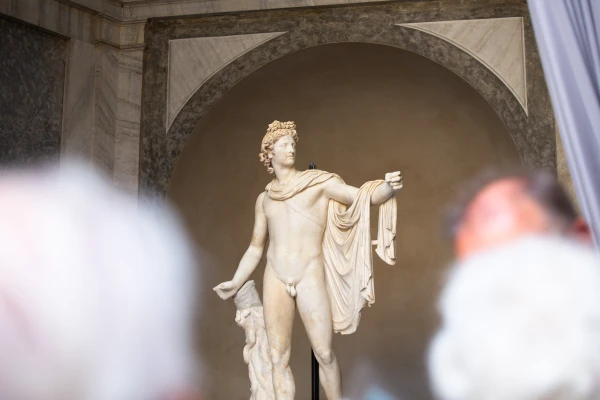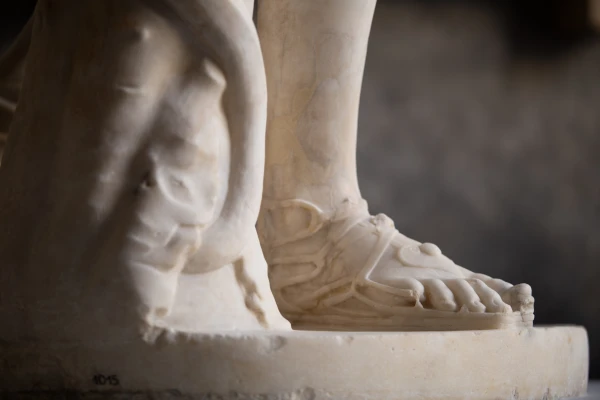Vatican City, Oct 16, 2024 / 14:15 pm
The Vatican Museums this week unveiled one of its most celebrated acquisitions, the “Apollo Belvedere,” after years of intensive restoration work by Patrons of the Arts in the Vatican Museums (PAVM) on the ancient marble statue.
Following the discovery of the statue in Rome in 1489, Pope Julius II requested the Apollo Belvedere to be brought to the Vatican in the early 16th century to be part of a papal collection known as the Courtyard of Statues in Belvedere, which highlighted the mythical origins of ancient Rome.

Monsignor Terence Hogan, PAVM coordinator and a priest of the Archdiocese of Miami, said the restoration of Apollo Belvedere is “significant because it gives us an insight into the early history of Rome” before the rise of Christianity.
“It gives us an insight into culture and also faith and history,” Hogan said in an interview with EWTN News. “We [the Vatican Museums] are the oldest museum in the world and so people from all around the world now can appreciate the faith, the art, the history, the culture of so many centuries.”
The restoration of Apollo Belvedere, directed by the Vatican Museums’ Department of Greek and Roman Antiquities, faced several challenges before its official unveiling on Oct. 15, including the outbreak of the COVID-19 pandemic in December 2019, which delayed the project.
“We closed on Christmas Eve 2019; however the actual work on the sculpture — between the research project and the actual study and restoration — has been just over two years,” said Claudia Valeri, curator of the Greek and Roman antiquities department.
“The preciousness of this sculpture is infinite because it is an iconic statue among classical sculptures,” she added.
According to Valeri, a significant archaeological discovery in northern Naples in the 1950s recovered the original plaster casts of the missing left hand of the Apollo Belvedere.

The cast was used by the Vatican’s restoration teams to create the marble copy of the hand now seen on the newly unveiled statue.
Valeri also said further study analysis of the statue of the ancient Roman god indicates that the all-white marble statue once had golden hair.
“Analysis detected traces of gold. We imagine that Apollo’s hair was golden, and by the way the Greek poets describe him to us as ‘radiant Apollo,’” Valeri told EWTN News.
Almost 500 years have passed since the last restorative works were carried out by Italian sculptor and architect Giovanni Angelo Montorsoli between 1532 and 1533.
EWTN Vatican Bureau intern Angelina Martsisheuskaya contributed to this report.






